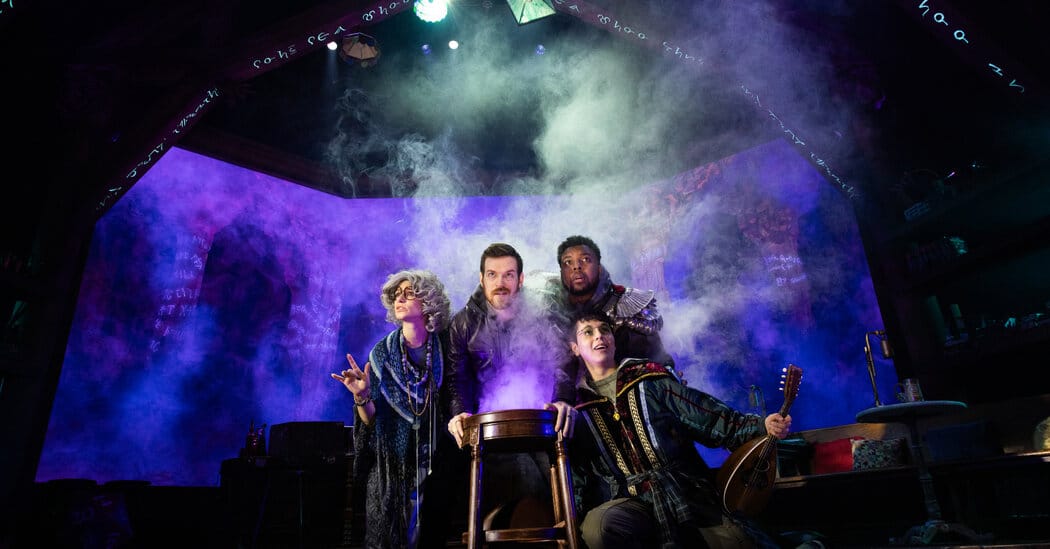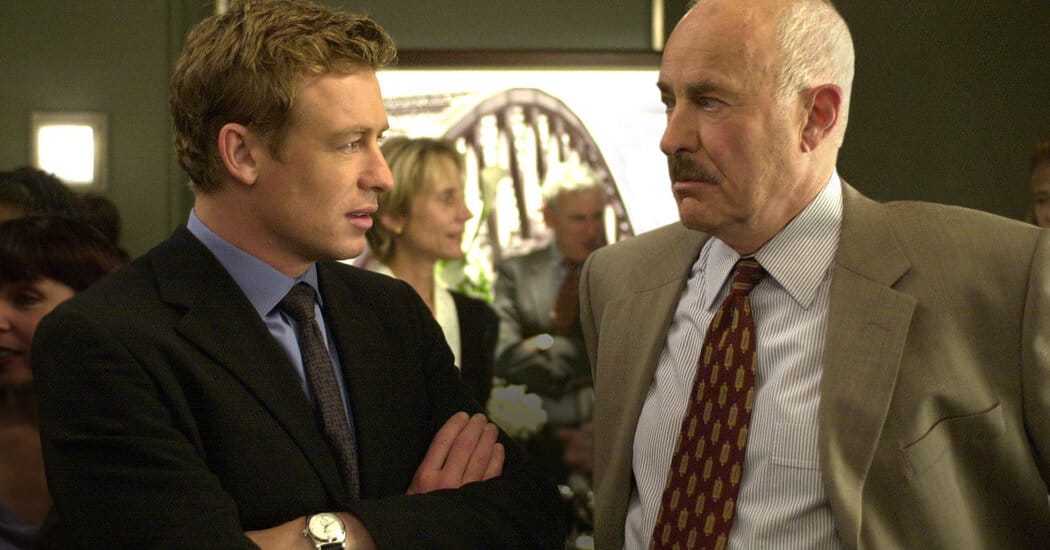While familiarity with things like non-player characters and their degree of disposability is not strictly necessary to enjoy “Dungeons and Dragons: The Twenty-Sided Tavern,” it certainly helps. At the very least, try tagging along with someone with an awareness of tabletop role-playing games.
Indeed, hearing such jokes as “Be gentle — this NPC doesn’t have the ‘essential’ tag,” made me grateful for the quality hours I spent playing Chivalry & Sorcery in my 20s. And the raucous laughter that welcomed the line at a recent performance of this Chicago import, now at Stage 42, confirmed I was among folks who shared an understanding.
This is less restrictive than it might sound in terms of potential audience because Dungeons & Dragons, which is turning 50 this year, has been undergoing a startling renaissance. People gather for regular sessions and the game maintains a strong pop-culture presence, from being a key component of the Netflix series “Stranger Things” to providing the framework for films like last year’s “Dungeons & Dragons: Honor Among Thieves.”
But unlike that straightforward fantasy tale, “The Twenty-Sided Tavern” is basically a play session. This makes it closer to the wildly popular output of Critical Role Productions, which presents live role-playing campaigns on various platforms.
Practically speaking, the show follows the basic steps of a D&D adventure. Three actors try to pull off a mission by reacting to prompts, solving riddles and, naturally, engaging in fights. This all happens under the direction of a dungeon master, played by DAGL (though his real name is David Andrew Laws), who created “The Twenty-Sided Tavern” with David Carpenter and Sarah Davis Reynolds (herself playing the watering hole’s keeper).
Three of the actors can handle several characters within the same class: Madelyn Murphy can play three versions of a mage, Tyler Nowell Felix three versions of a fighter and Diego F. Salinas three types of rogue. The specific characters and their mission are assigned at the start of the show, the first of many narrative forks each performance can take. The audience can use their phones to participate via the browser-based platform Gamiotics. (My phone sometimes lagged, preventing me from casting votes I like to think would have been crucial, but most likely weren’t.)
As with the tabletop version, the show relies heavily on a combination of scripted shenanigans, chance (those dice rolls!) and improvisation — getting into the plot details of the mission I saw makes little sense here as each performance is different. When it came to the improv component, the lively, quick-thinking Murphy clearly stood out, but all four actors threw themselves into the ambient silliness. (Families looking for an outing should note that the show is appropriate for kids ages 8 and up.)
If anything, the show is not so much traditional theater as community-building, starting with the theater itself: The upstairs lobby is decked out in D&D-themed paraphernalia, including a figure of a Mimic creature, and well-stocked bars help explain the crowd’s increased giddiness after intermission. At “The Twenty-Sided Tavern,” everybody knows your name, and your dexterity score.
Dungeons & Dragons: The Twenty-Sided Tavern
At Stage 42, Manhattan; thetwentysidedtavern.com. Running time: 2 hour 30 minutes.




